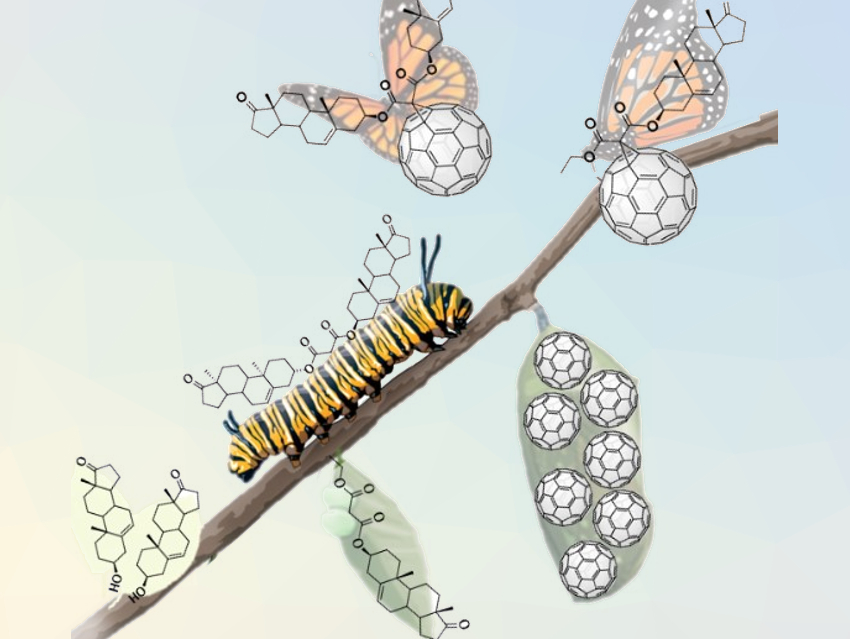Steroids make up an extensive and important class of biologically active polycyclic compounds. They are widely used for medical purposes. The hybridization of steroids with other molecules could allow the preparation of compounds with completely new properties and functions. Fullerene hybrids, e.g., with sugars or peptides, have previously shown interesting biological activities. Thus, hybrid systems combining C60 fullerenes and steroids might also have biomedical applications.
Margarita Suárez, Universidad de la Habana, Cuba, Nazario Martín, Universidad Complutense de Madrid, Spain, and colleagues have synthesized methano[60]fullerene derivatives bearing one or two steroid wings (pictured below). The team converted the steroid dehydroepiandrosterone (DHEA) to steroid malonates that contain either one or two steroid groups using commercially available (ethoxycarbonyl)acetyl chloride or malonyl chloride, respectively. The steroid malonates were then mixed with [60]fullerene, CBr4, and 1,8-diazabicyclo[5.4.0]undec-7-ene (DBU) at room temperature to obtain the desired methano[60]fullerene derivatives via Bingel–Hirsch cyclopropanations.

Transmission electron microscopy (TEM) showed that the fullerene hybrids have a tendency to organize into spherical nanoscale structures in aqueous solution. Molecular docking studies predict that they might be useful as HIV-1 protease inhibitors. The presence of the steroid wings contributes to enhancing the predicted biological activity by changing the polarity and lipophilicity of the hybrids.
- [60]Fullerene Hybrids Bearing Steroid Wings: A Join Experimental and Theoretical Investigation,
Luis Almagro, Reinier Lemus, Kamil Makowski, Hortensia Rodríguez, Orlando Ortiz, William Cáceres, M. Ángeles Herranz, Dolores Molero, Roberto Martínez-Álvarez, Margarita Suárez, Nazario Martin,
Eur. J. Org. Chem. 2020.
https://doi.org/10.1002/ejoc.202000989




